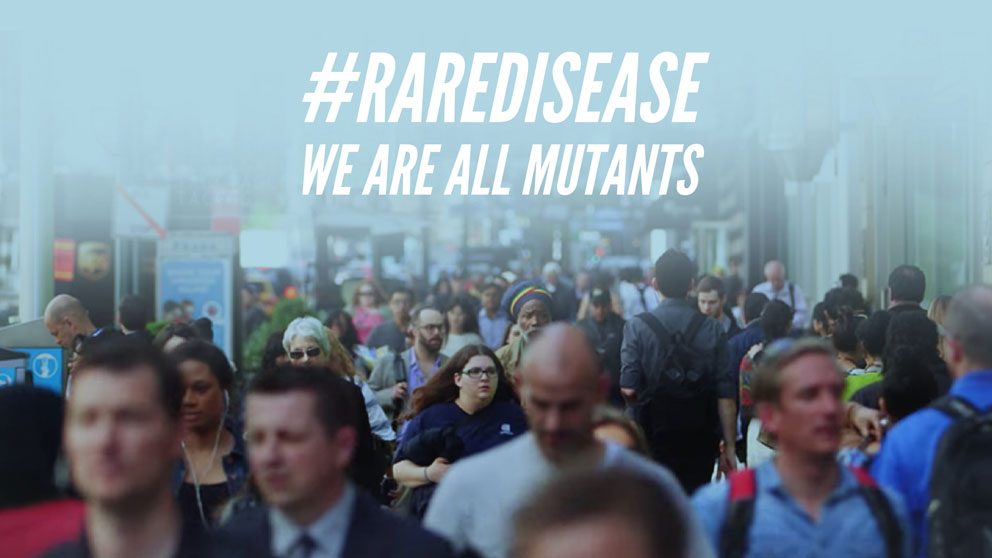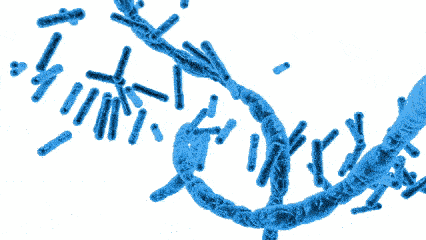
Rare disease aren't rare.
Wait, what?
Well, they are rare, at least on a disease-by-disease basis. In the United States, a rare disease is officially defined as any disease that affects fewer than 200,000 people in the country, or about 1 in 1,500. (Other countries vary, but only slightly.) Some are quite well known, such as amyotrophic lateral sclerosis (ALS, or Lou Gehrig’s disease), but all affect relatively few individuals.
In aggregate, however, the numbers add up. Recent research progress has expanded how many are diagnosable, and there now more than 7,000 recognized diseases. As a result, rare diseases are quite common, with incidence estimates ranging up to 1 in 10 people. They cover a huge range of severities, symptoms and causes too, from devastating neuromuscular diseases like ALS to behavioral disorders to fungal infections.
A high percentage of them are genetic diseases, many of which affect children. On the excellent NIH rare disease website, the genetic disease list literally covers A to Z: Aagenaes syndrome to Zygodactyly. Now, with modern sequencing and analysis methods, researchers and clinicians are often able to pinpoint not only the exact gene(s) affected, but in many cases the exact mutation(s) underlying disease symptoms in an individual.
And there’s even more to it than that. What if I told you that almost all of us have a rare condition? Of course, natural genetic variation occurs in millions of places throughout everyone’s genome, creating the small person-by-person differences that make us unique. But it turns out that most if not all of us also have the sort of genetic mutations that cause rare genetic diseases. The only difference is that most don’t manifest symptoms the way the disease mutations do.
What causes rare diseases to manifest?
Sometimes the answer is easy. We carry two copies of each gene, so when one copy of a gene is lost or mutated, the other is often sufficient for full function. These are known as recessive disease genes, and people with such mutations are known as carriers. If they have children with another carrier, there’s a one in four chance for each child to have no functional copies of the gene, and a genetic disease will likely result. Or, when the mutation is on an X chromosome, the probability jumps in boys. The result is a sex-linked disease, such as Duchenne muscular dystrophy, in boys who acquire an X chromosome with a mutated gene from their mother and a Y chromosome, which has different genes, from their father.

But sometimes the answer is more complicated. We may have mutations in genes for which biology has evolved workarounds. A study analyzing 185 human genome sequences turned up a surprising number of loss-of-function mutations in outwardly healthy people. At that time, the authors estimated that the average healthy person walks around with 100 loss-of function gene variants, including 20 genes that are completely inactivated. It’s a mix of evolution and good fortune that they occur in genes known as “loss-of-function tolerant.” (Regarding evolution, mutations in essential genes can be so severe that that they are lethal at some point before birth, so these are less likely to persist in a population.) Rare genetic diseases, on the other hand, usually arise from mutations in important genes that don’t have robust backup systems, or in other genomic regions that regulate these genes.
Genetic research on gene mutation
Researchers went further to better characterize exactly where non-disease loss-of-function mutations are most likely to occur. One study looked at a larger number of genomes—more than 10,500—from a study based in Pakistan. First cousins often marry in Pakistan, leading to a higher incidence of homozygous (affecting both copies of a gene) mutations. In this population, they found 49,138 rare loss-of-function mutations affecting 1,317 genes, seven of which were knocked out in more than one person. Interestingly, some of them actually appear to provide benefits instead of disease. For example, a family lacking one gene, APOC3, appeared perfectly healthy, but when they consumed fat, such as a fat-laden milkshake, their blood fat levels rose barely at all. People missing one copy of APOC3 had already been shown to resist coronary heart disease, so these results bolster the idea that blocking the gene could represent an important cardiovascular therapeutic strategy.
A different study of human knockouts revealed yet another aspect of these mutations. Sometimes those thought to have adverse health effects don’t have the expected impact. In this case, the researchers identified a woman with a loss-of-function mutation in a gene known as PRDM9, thought to be essential for recombination and reproduction. In addition to being healthy, however, the woman had three healthy children, much to the scientists’ surprise. The exact mechanism through which she was still able to have children is not readily clear, but it does underscore the fact that, in human genomics, the more we learn, the more we realize there’s a great deal more we don’t know.
Gene sequencing and our genetic health
Because of these complications, it’s essential to systematically investigate the biological mechanisms of knockout mutations. The mouse-based KOMP (Knock-Out Mouse Project) study is doing just that, knocking out thousands of genes one by one and seeing which genes are essential, what happens to the mouse’s physical traits without each gene, and what mechanisms are involved. JAX is one of the leaders of this effort, which is now progressing quite rapidly, and it will provide terrific insight into the nature of such single-gene (known as Mendelian) knockouts.
As seen before, however, humans generally carry many more than one such mutation. In essence, then, people exist on a mutation spectrum. Sadly, none provide gaudy powers such as those wielded by the X-men, but a few are more quietly beneficial to health and well-being. Most go unnoticed, with little to no impact on our day-to-day lives. And some do affect health and manifest in ways that are mild to quite severe. People with what we call genetic diseases, therefore, have no more genetic changes than the rest of us, they just have them in genomic regions that are crucial for “normal” function. As we learn more about these genes and regulatory regions, we’ll learn more about the affected mechanisms, and little by little, learn how to intervene and improve the lives of the many people with a “rare” genetic disease.
Modeling human diversity... in mice!
How can scientific research get answers when there's so much human diversity? Mice, of course!